This article was co-authored by Laura Marusinec, MD. Dr. Marusinec is a board certified Pediatrician at the Children's Hospital of Wisconsin, where she is on the Clinical Practice Council. She received her M.D. from the Medical College of Wisconsin School of Medicine in 1995 and completed her residency at the Medical College of Wisconsin in Pediatrics in 1998. She is a member of the American Medical Writers Association and the Society for Pediatric Urgent Care.
There are 10 references cited in this article, which can be found at the bottom of the page.
This article has been viewed 92,525 times.
Swimmer's ear, also known as acute otitis externa, is a painful infection in the canal between the outer ear and the eardrum. This condition is known as swimmer's ear because it is most commonly acquired when dirty water enters the ear canal while people swim or bathe. Swimmer's ear can also be caused by damage to the thin layer of skin protecting your ear from improper ear cleaning. A moist environment in the ear canal is necessary for the infection to take root. Know how to identify swimmer’s ear and get treatment before the infection becomes too painful and spreads.
Steps
Identifying the Early Infection
-
1Sense an itch in your ear. Itching in the outer ear and ear canal is the first sign of swimmer’s ear.[1]
- Because one of the main causes of an ear infection is through your ear being exposed to water, pay particular attention to itching that arises in the days soon after you have gone swimming.
- Infections due to fungi cause greater itchiness than those due to bacteria.
-
2Look for redness inside your ear. If you can see slight redness beginning just inside your ear, you may be developing an ear infection.[2]
- In most cases, the infection will only take place in one ear.
Advertisement -
3Pay attention to discomfort. You might not be in any real pain yet but have some slight discomfort, indicating an ear infection.[3]
- This discomfort even more clearly indicates an ear infection if you can make it worse by pulling on your outer ear (called the pinna) or by pushing on the little bump on the front of your ear (called the tragus). Pinna and tragus-induced irritations are considered classic findings in swimmer’s ear.
-
4Watch for drainage. At this stage of the infection, any drainage would be clear and odourless fluid.[4]
- Drainage quickly becomes yellow coloured and foul smelling as the infection progresses.
-
5See your doctor. At the first signs of an ear infection, go see your doctor. Although this is not an urgent medical issue, the infection can progress to the point of significant pain, chronic ear infection damage, and widespread infection.[5]
- There is a difference between swimmers ear, an infection in the ear canal usually due to water exposure, and a middle ear infection (otitis media). Otitis media usually occurs during or after an upper respiratory infection or with allergies. Your doctor can help determine which type of infection you may have and the proper treatment.
- Do not rely on over-the-counter ear drops. These drops usually do not have effective medication in them to clear the infection and you will need a prescription from your doctor for antibiotic or antifungal ear drops.
- Your doctor will examine your ear using an otoscope, which she gently inserts into the beginning of your ear canal. The otoscope helps her see the condition of the ear canal as well as the ear drum (tympanic membrane), which are not visible to you.
- Your doctor may also take a swab of your ear to determine the nature of the discharge. This is how the doctor will be able to confirm whether you need antibiotic or antifungal medication. The swab will need to be sent to a lab, but your doctor will start you on drops in the meantime.
- Your doctor will usually prescribe antibiotic ear drops to treat swimmers ear. The drops may also contain a steroid medicine to reduce inflammation and pain. She will also give you recommendations to help treat the pain until the infection has cleared.
Detecting a Progressing Infection
-
1Assess changes in sensation. You may now be experiencing more intense itching and also increased discomfort turning to pain. The increased pain is due to the development of fluid and inflammation in your ear from this moderate infection.[6]
- You will have a feeling of fullness inside the affected ear and partial blockage due to the build up.
- The pain and feeling of fullness may take a few days to arise and may be worse on yawning and swallowing.
-
2Evaluate the redness. As the infection progresses, the redness in your ear will become more extensive.[7]
-
3Look for drainage changes. The drainage coming from your ear may increase in volume and also might now be turning to pus.[8]
- Pus is a yellowy-thick fluid that exudes from infections and usually smells bad. Use a clean tissue to dry wipe the pus from your outer ear.
-
4Determine if you hear normally. You may be sensing that your hearing is becoming slightly decreased or muffled.[9]
- The change in hearing is related to the blockage in your ear canal.
- Cover your unaffected ear and see how well you hear out of the affected ear.
Assessing a Late Progression
-
1Expect increased pain. You may now have severe pain spreading to your face, neck, jaw, or the side of your head that is affected by the advanced ear infection.[10]
- You should see your doctor right away or go to the emergency room if you have severe symptoms.
-
2Anticipate muffled hearing. You will likely now have complete blockage of your ear canal, reducing your ability to hear out of the infected ear.[11]
-
3Look for physical changes. The redness of your ear will increase and your outer ear may now be swollen and red.[12]
-
4Feel your neck for swelling. As the infection increases, the lymphatic system in your body will be activated to fight. Swelling in the lymph nodes in your neck therefore indicate an increased progression of infection.[13]
- Use the middle 3 fingers of your hand to check your lymph nodes. Press gently down the sides of your neck and under your jaw line for swelling.
-
5Check for a fever. As the infection begins to affect your body to a greater extent, your body will be working harder to fight off the infection. One way your body does this is by raising your temperature to make the environment inhospitable to infections.[14]
- A fever will generally be anything over 37.3C or 99F.
- There are different ways to monitor a fever, including using tympanic, or ear, thermometers. If you have an ear infection, be sure to take your temperature in the opposite ear. The infection will naturally increase the temperature in the affected ear so you want to be sure you get a true reading of your body temperature.
References
- ↑ https://www.hopkinsmedicine.org/health/conditions-and-diseases/swimmers-ear
- ↑ https://www.hopkinsmedicine.org/health/conditions-and-diseases/swimmers-ear
- ↑ https://my.clevelandclinic.org/health/diseases/8381-swimmers-ear-otitis-externa
- ↑ https://www.nhsinform.scot/illnesses-and-conditions/ears-nose-and-throat/otitis-externa#symptoms-of-otitis-externa
- ↑ https://my.clevelandclinic.org/health/diseases/8381-swimmers-ear-otitis-externa
- ↑ http://emedicine.medscape.com/article/994550-overview
- ↑ https://www.cdc.gov/healthywater/swimming/swimmers/rwi/ear-infections.html
- ↑ https://www.nhsinform.scot/illnesses-and-conditions/ears-nose-and-throat/otitis-externa#symptoms-of-otitis-externa
- ↑ https://www.nhsinform.scot/illnesses-and-conditions/ears-nose-and-throat/otitis-externa#symptoms-of-otitis-externa
- ↑ https://www.entcolumbia.org/staywell/swimmers-ear-otitis-externa
- ↑ https://www.entcolumbia.org/staywell/otitis-externa-swimmers-ear
- ↑ https://www.healthdirect.gov.au/swimmers-ear
- ↑ https://www.hopkinsmedicine.org/health/conditions-and-diseases/otitis-externa
- ↑ https://www.hopkinsmedicine.org/health/conditions-and-diseases/otitis-externa
- ↑ https://www.cdc.gov/healthywater/swimming/swimmers/rwi/ear-infections.html
- ↑ https://www.ncbi.nlm.nih.gov/pmc/articles/PMC6522672/
About This Article
To identify swimmer’s ear, note if you feel an itching sensation in the outer ear and the ear canal, which is one of the earlier signs. Additionally, see if there’s any redness just inside your ear or if you feel any discomfort that feels worse when you pull on your ear. You may also notice some clear drainage, which will become yellow as the infection progresses. If you have any of these symptoms, see your doctor as soon as possible to prevent the infection from causing long-term damage. Once your doctor confirms the infection, you'll likely be given a prescription for antibiotics. For more tips from our Medical co-author, including how to detect a progressing ear infection, keep reading!






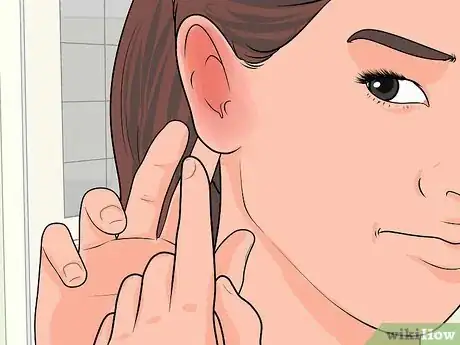
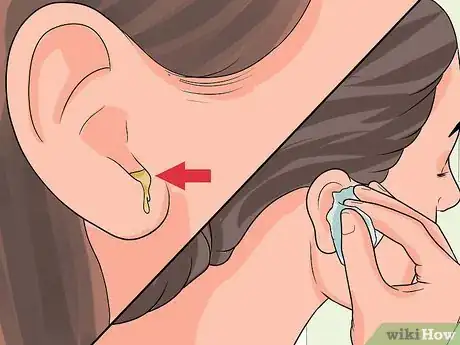


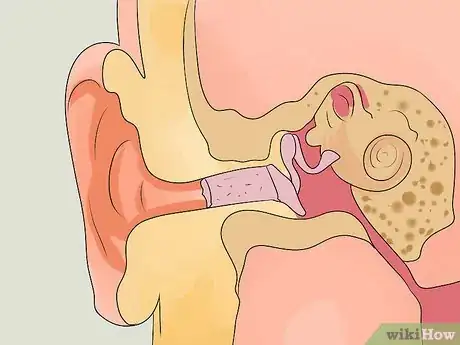
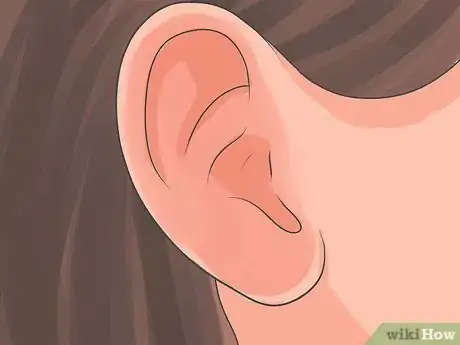

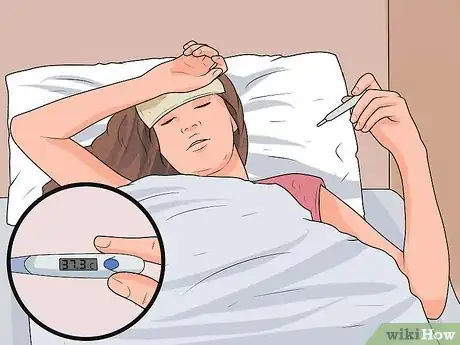
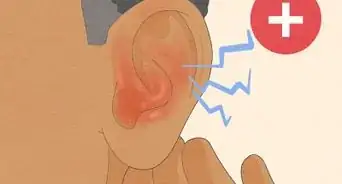








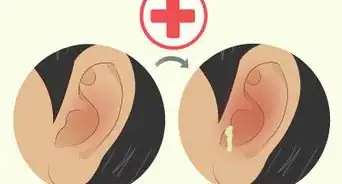

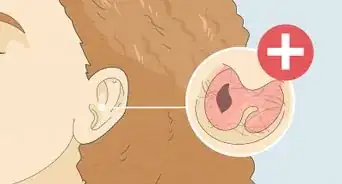







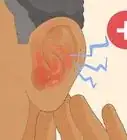
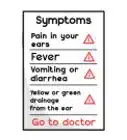





































Medical Disclaimer
The content of this article is not intended to be a substitute for professional medical advice, examination, diagnosis, or treatment. You should always contact your doctor or other qualified healthcare professional before starting, changing, or stopping any kind of health treatment.
Read More...